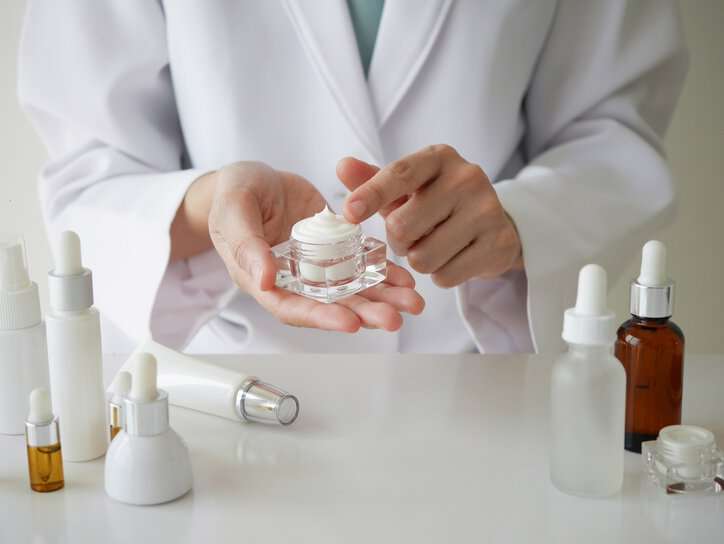ASTM E1490-19: Skin Creams And Lotions

The earliest evidence of the use of lotion-type salves can be traced as far back as 3000 BC to the Ancient Sumerians and the Ancient Egyptians. Sumerians used pulverized plants and tree oils while the Egyptians used ingredients such as castor oil, herbs, milk, and honey. Skin care and skin protection was vital for these civilizations who lived in harsh climates, exposed to extreme heat and wind. They, like us today, knew the importance of taking care of our skin. ASTM E1490-19: Standard Guide For Two Sensory Descriptive Analysis Approaches For Skin Creams And Lotions provides a guide for two approaches to the descriptive analysis of skin care products: the technical assessor approach and consumer behavior approach.
Benefits of Skin Lotion and Creams
Moisturizing prevents skin problems as it keeping skin balanced. Skin is more likely to develop acne if it is too dry or too oily. Moisturizing the skin with a lotion or cream also reduces the appearance of blemishes. Skin that has been moisturized recently has a healthy glow, which can reduce blemishes already present on the skin. Further, keeping skin moisturized keeps it young and it can make wrinkles less noticeable. Unlike any other area on your body, the most delicate parts of your skin—face, ears, neck, and chest—change more frequently than other parts. As a result of this daily skin cell loss, these areas are vulnerable to dryness and the elements. They are also the most prone to skin cancer since these parts of the body are the most exposed to the sun. Moisturizing these delicate areas helps the skin repair and keep it healthy.
What Is ASTM E1490?
ASTM E1490-19 provides procedures for two different descriptive analysis approaches that may be used to qualitatively describe the sensory attributes of skin creams and lotions and quantitatively measure their intensity, similarities, and differences over time. Descriptive analysis can be used to define the sensory experience of skin care products that can then be used to provide direction in product formulation, competitive assessment, ingredient substitutions, research guidance, and advertising claim substantiation. The guidelines in ASTM E1490-19 are provided for the selection and training of assessors, defining sensory attributes, measuring intensities on rating scales, developing procedures for the manipulation of the product alone and the product on the skin, product handling, and evaluation of skin condition before testing.
Lotion Vs Skin Cream
A lotion is typically a mix of water and droplets of oil. It is lighter weight than cream and is non-greasy. Lotions, usually formulated with more water content than creams, maintain skin’s hydration levels by locking in the moisture, keeping the skin healthy, soft, and supple. Because body lotion is more readily absorbed by the skin (due to its lower viscosity than cream) it is excellent for oily normal, and slightly dry skin. It leaves a less greasy residue than cream and is ideal for use during the day and in hot summer months.
Like lotion, a cream is a blend of oil and water, but with a higher oil concentration (a 50-50 ratio of water and oil). Creams are thicker in consistency than lotions and provide a barrier that keeps skin ultra-hydrated. Like lotion, body cream is used to treat and prevent dry, cracked skin while keeping it supple and moisturized. Because it provides a barrier that provides ultra-hydration, it is best for dry to excessively dry skin and for normal skin during the harsher winter months.
ASTM E1490-19: Standard Guide For Two Sensory Descriptive Analysis Approaches For Skin Creams And Lotions is available on the ANSI Webstore.






